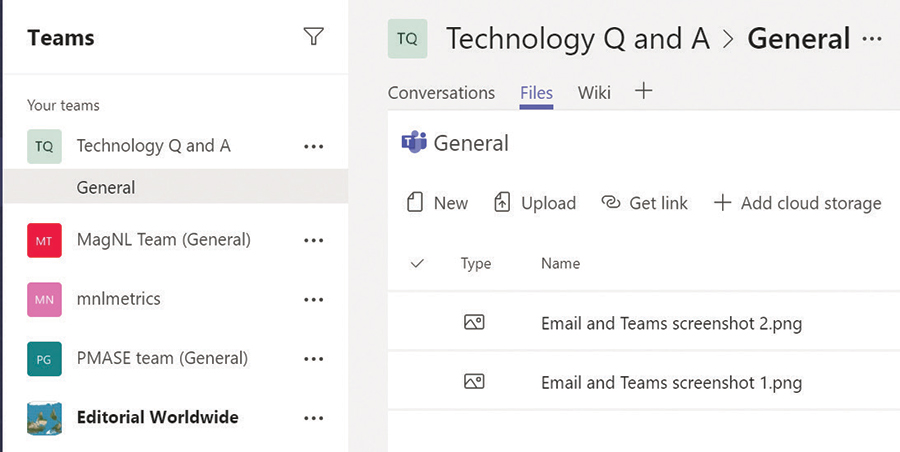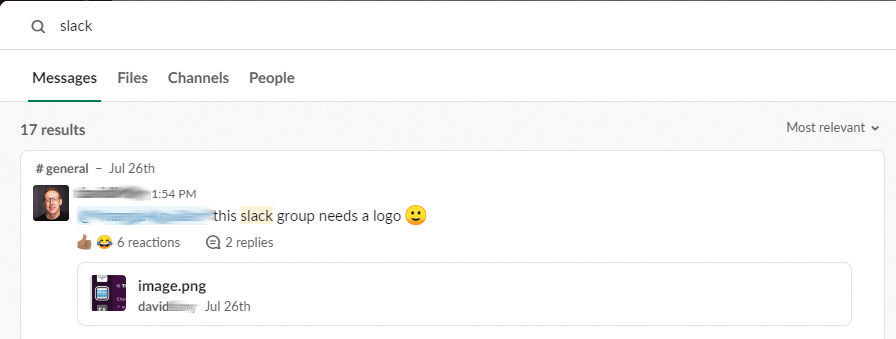- column
- TECHNOLOGY Q&A
Sick of emailing it in? Check out Slack and Teams
Please note: This item is from our archives and was published in 2020. It is provided for historical reference. The content may be out of date and links may no longer function.
Related
AICPA releases gen AI tool: Josi
Reflecting on AI’s rise in accounting, looking to what comes next
AI, succession, the talent pipeline, and defining ‘unapologetic’ ambition
TOPICS
Q. My staff and I are getting buried under an avalanche of emails. It’s out of control. Surely, there has to be a better way to communicate, at least inside the business. Any ideas?
A. Email is undeniably the primary form of business communication today, which is both good and bad. On the positive side, it’s convenient, easy to use (usually), and … well, that about covers it.
On the negative side, the siloed nature of individual email accounts results in locust-like infestations of individual emails overwhelming inboxes, eating up user time, and creating innumerable opportunities for confusion and delay. And don’t even get me started on people hitting Reply All when there is no need to.
Fortunately, a treatment for our email affliction is emerging in the form of collaboration applications, most notably Slack and Microsoft Teams. Admittedly, these are not 100% replacements for email, but they do provide much better platforms for team collaboration and organizational knowledge capture.
Some organizations have successfully moved all internal communication out of email and into Slack or Teams. Other organizations have started the process, and the speed of adoption is likely to increase, especially for Teams (since so many businesses run on Microsoft Windows and rely on applications such as the Office 365 suite).
At first glance, Slack and Teams appear to be a new version of popular instant messaging apps such as Microsoft Skype for Business. Slack and Teams can replace instant messaging applications, but they also offer features and functionality that resolve many of the challenges associated with email.
To help you understand how Slack and Teams are different from (and are often better than) email, let’s see how these applications address common problems with email.
Change with channels
Problem: Senders, subject lines, and folders are all used to help organize topics in email, but they don’t catch everything. There is always a missing email, usually the one you most need to find. Plus, you don’t always know if everyone is looking at the same email or file.
Solution: Slack and Teams allow you to create channels, which organize conversations and collaborations around specific topics. You can create channels of any topic you choose and invite people, inside and outside your organization, to participate in those channels. Channel administrators can manage member permissions, including limiting members to read-only access or disabling access to a channel. Unlike email folders that only you can access, channels are accessed by everyone who has been invited into the conversation and therefore keep the communications organized. For example, you could have a channel named “Month End Close” where only messages related to the month-end close are discussed. Or if you have a Training channel, you could also post links to related content, as shown in the screenshot below.

Threaded in the right direction
Problem: A group email that results in multiple people hitting Reply All at (or about) the same time becomes a tangled mess of intertwined yet out-of-order messages that is difficult to follow and leads to confusion and wasted time. A similar challenge is a group text message, with many topics being discussed in a single thread, which can create significant opportunities for confusion.
Solution: Both Slack and Teams resolve the group email and text message challenges by organizing the channel topics into additional threads, which allow for conversations to remain organized and easy to follow. This is accomplished by providing the ability to create a discussion thread for each topic within a single conversation. As a result, when multiple people are collaborating on a topic, each subtopic is grouped and kept in order in a separate thread, as indicated in the screenshot below.

Access to and editing of files in the tool
Problem: Keeping track of the latest version of an email attachment, as people are editing and reattaching, can result in wasted time and mistakes if the wrong version is used.
Solution: A single collaboration platform provides the ability to attach files within a channel or thread, as shown in the screenshot below. You can extend this functionality using the G Suite or Office 365 integration in Slack, or the Office 365 integration built into Teams. These integrations enable you to edit the files right within the platforms, resulting in no confusion when searching for the latest file of a document.

Enjoy the search party
Problem: Knowledge shared in an email is siloed in each individual’s inbox. For example, if an email was sent six weeks ago to the entire company announcing dates of parking lot construction at the office, new employees will not have that information, and existing employees may not easily be able to recall the email for reference purposes.
Solution: When a company using Teams or Slack onboards employees, they gain access to previous announcements shared with the organization. Additionally, the “Search” functionality, shown from the Accounting Salon Slack group below, makes it extremely easy to locate the information for new or existing staff members. By searching “parking lot,” the announcement and construction schedule is easily retrievable for all.

Adding new methods of collaboration to an organization requires building new muscle memory for your team and can take time. When you introduce one of these new tools, start slowly and set appropriate expectations. As the habit of using the new platform builds, it will be easier to add layers of communication and move out of inbox hell.
— By Byron Patrick, CPA/CITP, CGMA
About the authors
Kelly L. Williams, CPA, Ph.D., MBA, is an assistant professor of accounting at Middle Tennessee State University. Byron Patrick, CPA/CITP, CGMA, is senior applications consultant at botkeeper.
Submit a question
Do you have technology questions for this column? Or, after reading an answer, do you have a better solution? Send them to jofatech@aicpa.org. We regret being unable to individually answer all submitted questions.


















